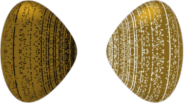

|
||||||||

|
||||||||

|
||||||||

|
||||||||

|
||||||||

|
||||||||

|
||||||||

|
||||||||

|
||||||||

|
||||||||

|
||||||||
Poincaré instituteReinventing rational points |
|
||||||||
Lectures
Quantitative aspects of rational points on algebraic varietiesPer SalbergerLet \(X\) be a subvariety of \(\mathbf P^n\) defined over a number field and \(N(B)\) the number of rational points of height at most \(B\) on \(X\). There are then general conjectures of Manin on the asymptotic behaviour of \(N(B)\) when \(B\to\infty\). These conjectures can be studied using the Hardy-Littlewood method for non-singular complete intersections of high dimensions and by adelic harmonic analysis for varieties related to algebraic groups. But for most varieties there are no other methods available than sieve methods and determinant methods. The latter were first utilised for affine plane curves in a paper of Bombieri-Pila and then for projective varieties by Heath-Brown and myself. The goal of the \(p\)-adic version of the method is to show that the set of rational points of height at most B on X in a congruence class satisfy further equations if \(p\) is large enough compared to \(B\). One can then proceed by induction with respect to dim\((X)\) to obtain uniform upper estimates for \(N(B)\) in all dimensions. The lectures will be devoted to determinant methods. We will use Chow forms to give a more intrinsic reformulation of the p-adic method described in the Crelle papers of Broberg and myself. This will reveal how stability conditions from geometric invariant theory affect the equidistribution of rational points. To make optimal use of the \(p\)-adic congruences, we apply the theory of volumes of line bundles in Lazarsfeld’s book. There is also a global determinant method developed by the author, which in most cases give better estimates than the \(p\)-adic method. It was used to prove the dimension growth conjecture of Heath-Brown and Serre. The basic idea is to use all congruences simultaneously. But it is technically much harder to implement than the \(p\)-adic method. We shall therefore instead describe a somewhat easier “semiglobal” version used in our paper on cubic surfaces and hypersurfaces. |
|||||||||



